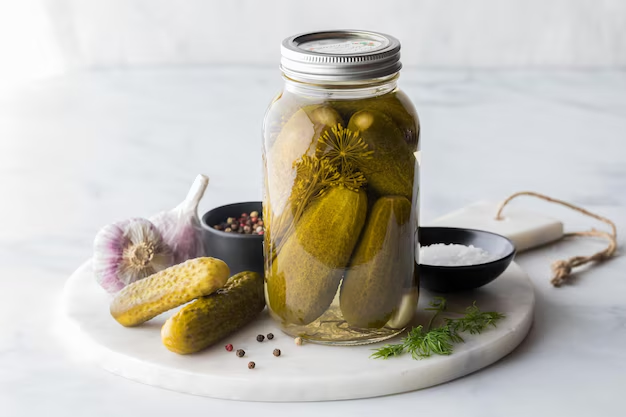Can Diabetics Enjoy Pickles Without Worry?
For those pondering their lunchtime options, you might ask: can diabetics eat pickles without guilt? The short answer is yes. However, as with many health-related topics, there's a little more nuance to explore.
The Health Impact of Pickles on Blood Sugar
Pickles, whether they're dill, sweet, or bread and butter, start as cucumbers, a low-calorie and low-carb vegetable. When transformed into pickles, they retain these qualities, making them a generally safe snack for people with diabetes. What gives pickles their characteristic zest is the vinegar used in the pickling process, which not only adds flavor but can potentially help stabilize blood sugar levels. Some studies suggest that vinegar can improve insulin sensitivity after meals, though eating pickles should not replace professional medical advice or diabetes management strategies.
Watch Out for High Sodium
One element to be mindful of is sodium content. Pickles, especially in their canned or jarred form, are typically high in salt. Excessive sodium can have negative effects, such as increasing blood pressure, a common concern among diabetics. Moderation is key, and choosing low-sodium varieties can help mitigate these concerns, allowing you to still enjoy a crunchy bite without the hypertension risk.
Sweetened Pickles: A Diabetic Dilemma
Another consideration is the sugar content in certain sweetened pickles. Bread and butter pickles or those described as "sweet" often contain added sugars, which can spike blood glucose levels. Always check the label for added sugar or opt for sugar-free versions to keep your dietary intake in check.
Beyond the Pickle Jar: Financial Health Considerations
Maintaining a healthy diet can sometimes weigh heavily on your wallet, especially if you're living with diabetes and adhering to a specific nutritional plan. Here are some financial strategies to relieve the stress of managing both your health and finances:
🍎 Government Food Assistance Programs
- Supplemental Nutrition Assistance Program (SNAP): Provides benefits to supplement a grocery budget.
- Women, Infants, and Children (WIC) Program: Assists low-income pregnant women, breastfeeding mothers, and young children.
💲 Healthcare and Prescription Help
- Medicaid and Medicare Programs: Designed for low-income individuals and elderly people, covering a wide range of medical needs.
- Patient Assistance Programs (PAPs): Offered by pharmaceutical companies for qualifying individuals to receive medications at reduced or no cost.
🏠 Debt Relief and Credit Solutions
- Credit Counseling Services: Free or low-cost services to help manage and reduce debt.
- Debt Management Plans (DMPs): Programs to consolidate and simplify debt repayments.
🎓 Educational Grants and Resources
- Federal Pell Grants: Financial aid for low-income undergraduate students.
- Scholarships and bursaries: Offered by various educational institutions to support education without financial burden.
Don't let dietary constraints add to the strain of financial concerns. By exploring these financial assistance programs, you can maintain your health and wealth more effectively, ensuring a balanced approach to both.
